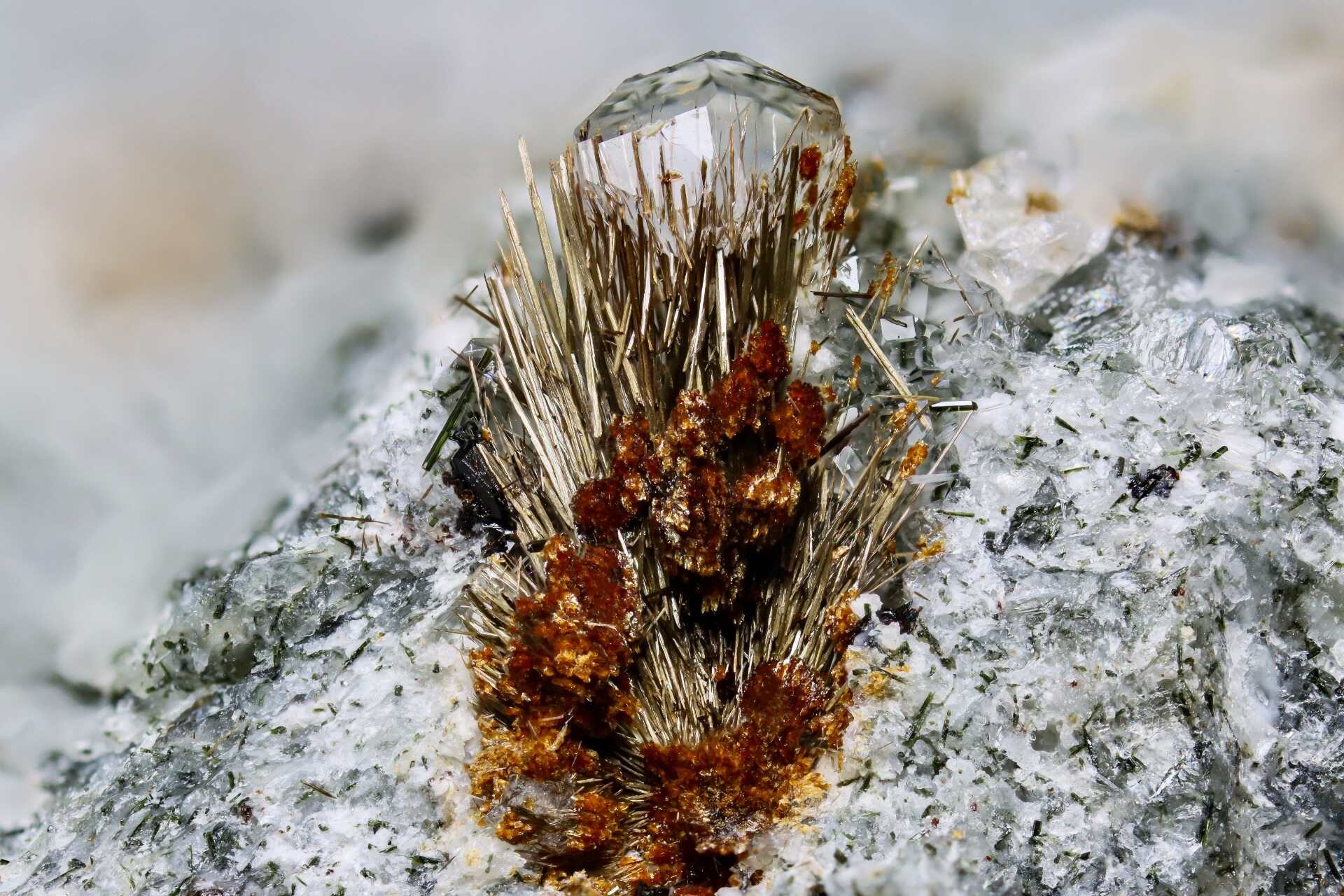
Zakharovite is a rare and intriguing mineral that captures the interest of geologists and collectors alike. Found primarily in Russia, this mineral boasts a unique chemical composition and striking appearance. What makes Zakharovite so special? Its vibrant yellow color and complex crystal structure set it apart from more common minerals. Named after the Russian mineralogist Evgeny Zakharov, it was first discovered in the Kola Peninsula. This mineral is not just a pretty face; it also has fascinating properties that make it a subject of study in mineralogy. Whether you're a seasoned collector or a curious newbie, learning about Zakharovite can be both educational and exciting. Let's dive into 30 amazing facts about this captivating mineral!
Key Takeaways:
- Zakharovite is a rare, bright yellow mineral found in specific rocks. It's loved by collectors and used in geological studies and museums due to its unique properties and striking appearance.
- Named after a Russian mineralogist, Zakharovite is a soft, translucent mineral with a glass-like luster. Its chemical composition and structure make it valuable for studying rare minerals and the formation of alkaline igneous rocks.
What is Zakharovite?
Zakharovite is a rare mineral that has intrigued geologists and mineralogists alike. Found in specific locations, it has unique properties that make it a subject of study and fascination.
- Zakharovite is a hydrous sodium manganese silicate mineral.
- It was first discovered in the Kola Peninsula in Russia.
- Named after Russian mineralogist E.E. Zakharov, who contributed significantly to mineralogy.
- Zakharovite typically forms in alkaline igneous rocks.
- It has a triclinic crystal system, meaning its crystal lattice is asymmetrical.
- The mineral is often found in association with other rare minerals like natrolite and aegirine.
- Zakharovite is known for its bright yellow to orange color.
- It has a vitreous luster, giving it a glass-like appearance.
- The mineral's hardness on the Mohs scale is about 5, making it relatively soft.
- Zakharovite is translucent, allowing light to pass through but not detailed images.
Chemical Composition and Structure
Understanding the chemical makeup and structure of Zakharovite helps in identifying and studying it further.
- Zakharovite's chemical formula is Na4Mn5Si10O30·6H2O.
- It contains sodium (Na), manganese (Mn), silicon (Si), oxygen (O), and water (H2O).
- The presence of manganese gives Zakharovite its distinctive color.
- Its structure includes chains of silicate tetrahedra, which are linked by manganese and sodium atoms.
- The mineral's water content is essential for its stability and formation.
- Zakharovite's crystals are often elongated and prismatic.
- It can form fibrous aggregates, where many small crystals grow together.
Occurrence and Locations
Zakharovite is not found everywhere. Its occurrence is limited to specific geological settings.
- Besides the Kola Peninsula, Zakharovite has been found in Mont Saint-Hilaire in Canada.
- It is typically located in pegmatites, which are coarse-grained igneous rocks.
- The mineral can also be found in hydrothermal veins, where hot, mineral-rich water flows through cracks in rocks.
- Zakharovite is often discovered in mines that extract other minerals.
- It is considered a collector's mineral due to its rarity and unique properties.
- The mineral is usually found in small quantities, making large specimens rare.
Uses and Applications
While Zakharovite is not widely used in industry, it has specific applications and significance.
- Zakharovite is primarily of interest to mineral collectors and researchers.
- It is used in geological studies to understand the formation of alkaline igneous rocks.
- The mineral's unique properties make it a subject of crystallographic studies.
- Zakharovite can be used in educational settings to teach about rare minerals.
- It is sometimes displayed in museums due to its striking appearance.
- The mineral can be used to study the role of manganese in mineral formation.
- Zakharovite's rarity and beauty make it a valuable addition to any mineral collection.
Final Thoughts on Zakharovite
Zakharovite, a rare mineral, has fascinated geologists and collectors alike. Its unique crystal structure and vibrant colors make it a standout in the mineral world. Found primarily in Russia, this mineral is named after the Russian geologist Evgeny Zakharov. Its chemical composition includes sodium, manganese, and silicon, contributing to its distinct appearance.
Understanding Zakharovite's properties helps in identifying and appreciating its rarity. It's not just a pretty specimen; it also offers insights into geological processes. Collectors value it for its beauty and scientific significance.
Whether you're a seasoned geologist or a curious enthusiast, Zakharovite provides a glimpse into the Earth's hidden treasures. Keep an eye out for this captivating mineral, and you might just add a unique piece to your collection. Happy hunting!
Frequently Asked Questions
Was this page helpful?
Our commitment to delivering trustworthy and engaging content is at the heart of what we do. Each fact on our site is contributed by real users like you, bringing a wealth of diverse insights and information. To ensure the highest standards of accuracy and reliability, our dedicated editors meticulously review each submission. This process guarantees that the facts we share are not only fascinating but also credible. Trust in our commitment to quality and authenticity as you explore and learn with us.


